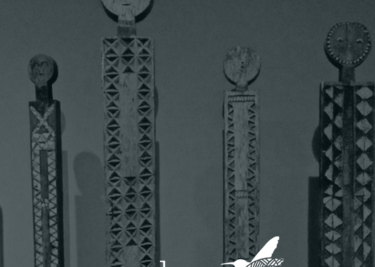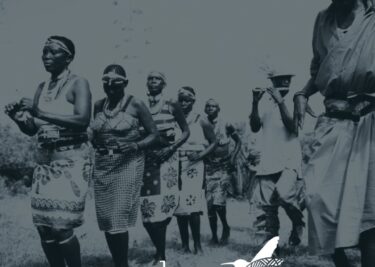Taveta Initiation Rites

On the Kenyan side of the foothills of the snow-capped Kilimanjaro Mountain is a small town called Taveta. This town, which is home to the similarly named Taveta community, is intersected by the Lumi River. The Lumi River is lined with enormous trees that have been sustained by the river waters for years. While they may seem inconsequential today, the wood harvested from these trees traditionally played a crucial role in the initiation rituals of Taveta boys.
The transition from boyhood to manhood was marked physically through circumcision, and symbolically by giving the new initiates tools needed to make a bow and arrows. The bows and arrows represented two important duties that the initiate would be expected to carry out in this new stage of life: hunting and warfare. After several days of rest and recovery from the circumcision, each of the initiates was given a branch sourced from a Msongorewa tree growing on the riverbank with its bark intact.
Under the guidance of an older circumcised male referred to as muganga, each of the initiates fashioned a bow, locally known as uta, from a tree branch. Unlike other bows used in day-to-day life, circumcision bows were intricately designed by incising the barks to create geometric patterns, symbols of clan animals, and features such as the sun and moon. During this period, the muganga would educate the initiates about the cultural meaning of the symbols they were creating.
Once the motifs were fully carved out into the branch, the bark would be lifted off carefully. The design became visible as the dark-coloured bark left on the branch contrasted with the light-coloured wood in the branch’s interior. After successfully making a bow, the initiates also made arrows from the wood of the iroroti tree which also grows along the Lumi River. Unlike arrows used for hunting or war which had sharpened and poisoned tips, circumcision arrows were blunt and rounded with a lump of beeswax at the tip.
For the thirty days that followed their completion of this task, the initiates conducted target practice using toy birds made of stuffed grass. Competitions often broke out among the initiates as to who could hit the highest number of target shots. The winner was jubilantly celebrated as the best marksman in the group. Once this thirty-day period elapsed, the bows were destroyed or thrown away while the arrows were passed on to the next group of initiates. This is an indicator that the circumcision bows were made purely for ritual purposes and not intended for long-term use. Larger bows made from stronger wood could then be made by the new young men of the Taveta community.
Have you ever heard of ceremonial bows before? Which other communities used them in their initiation rituals? Comment and let us know!
#KeRites



